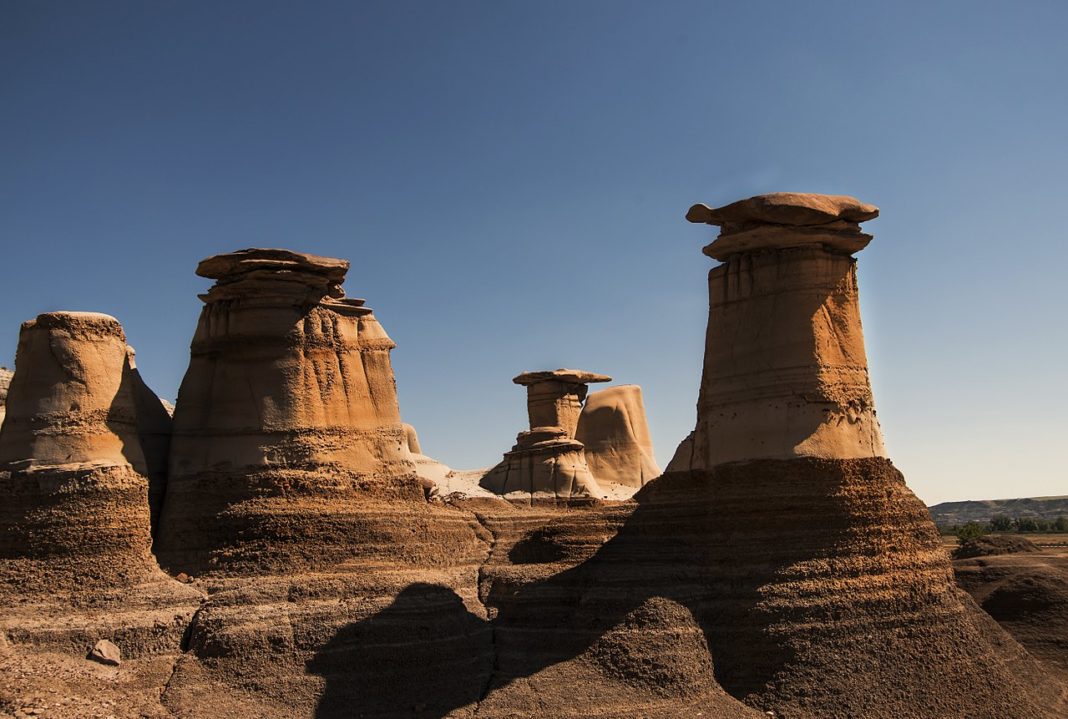These strange and fascinating rock formations are the result of millions of years of erosion, and they continue to amaze and inspire visitors from all over the world. The hoodoos are tall, thin pillars of rock that are capped with a flat rock. They are typically found in badlands, which are areas of dry, eroded land. The hoodoos of Drumheller are made up of a soft layer of rock called shale, which is overlain by a harder layer of rock called sandstone. Over time, the shale has eroded away, leaving the sandstone pillars standing.
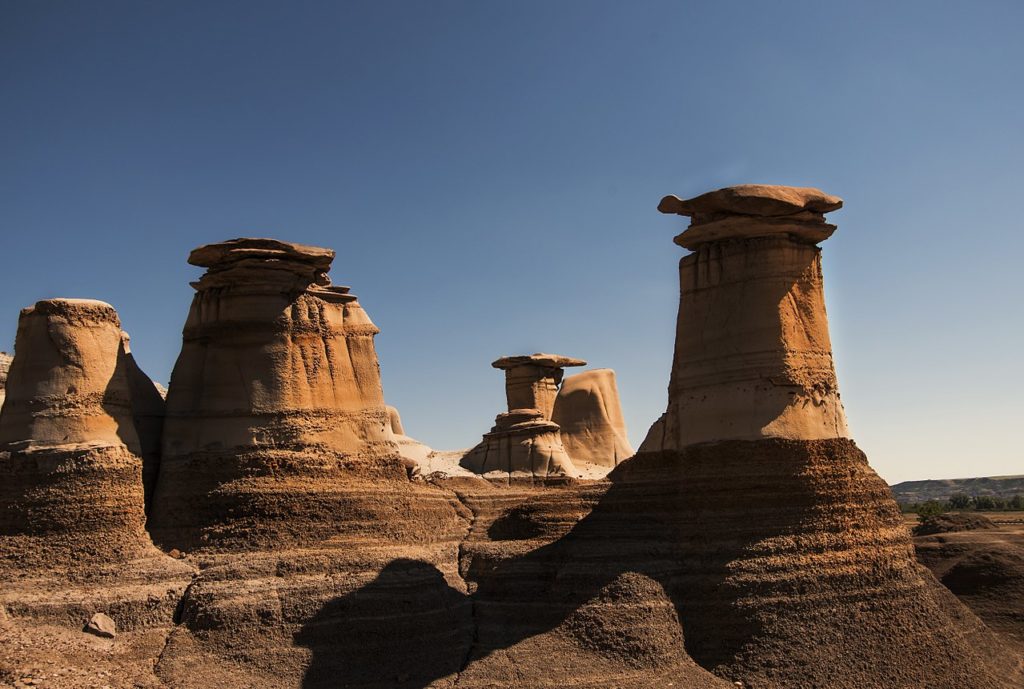
The process of erosion that created the hoodoos is called differential weathering. This means that the different layers of rock erode at different rates. The shale is more easily eroded by wind and water, while the sandstone is more resistant. This differential weathering process has created the distinctive shape of the hoodoos, with their tall, thin pillars and flat caps.
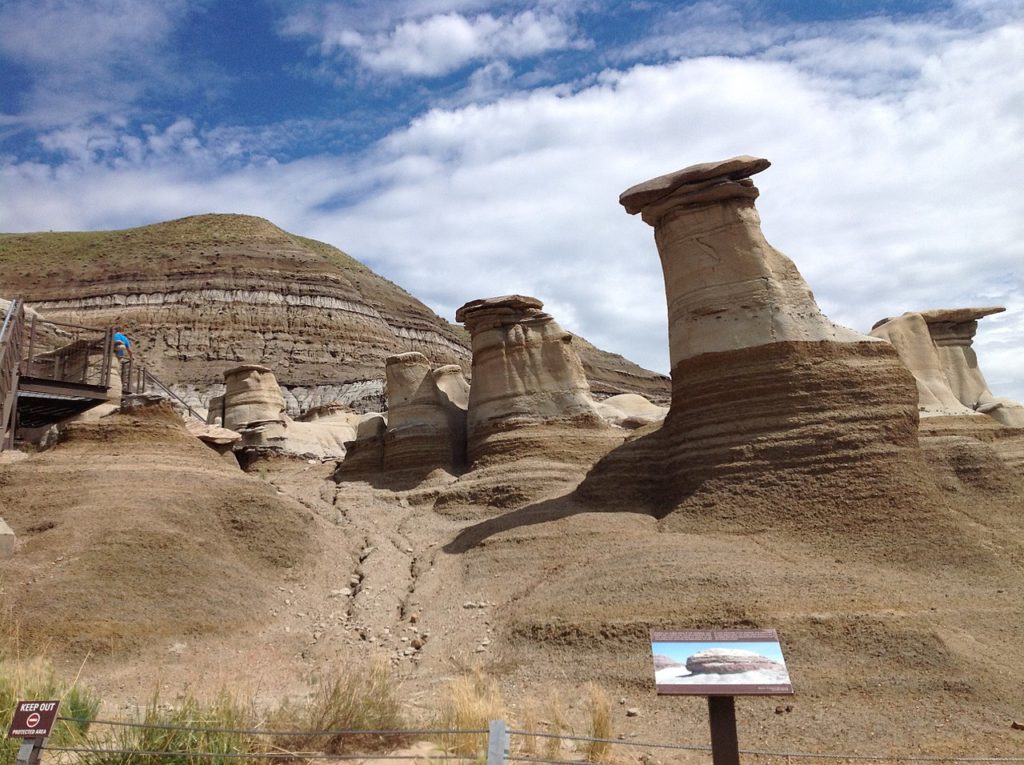
The hoodoos of Drumheller are a popular tourist destination. Visitors can hike among the hoodoos, explore the surrounding badlands, and learn about the geology of the area. There are also several museums in Drumheller that exhibit dinosaur fossils and artifacts from the region.
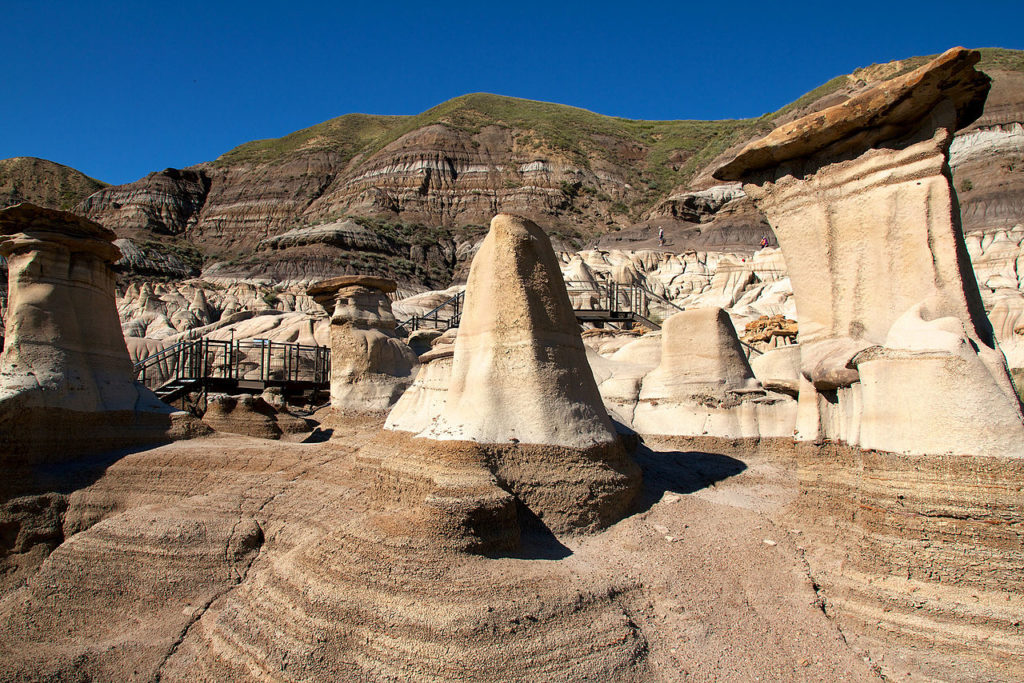
The hoodoos are a fragile ecosystem, and they are susceptible to damage from human activity. Visitors are encouraged to stay on designated trails and to avoid touching the hoodoos. By following these simple guidelines, we can help to protect these natural wonders for future generations to enjoy.
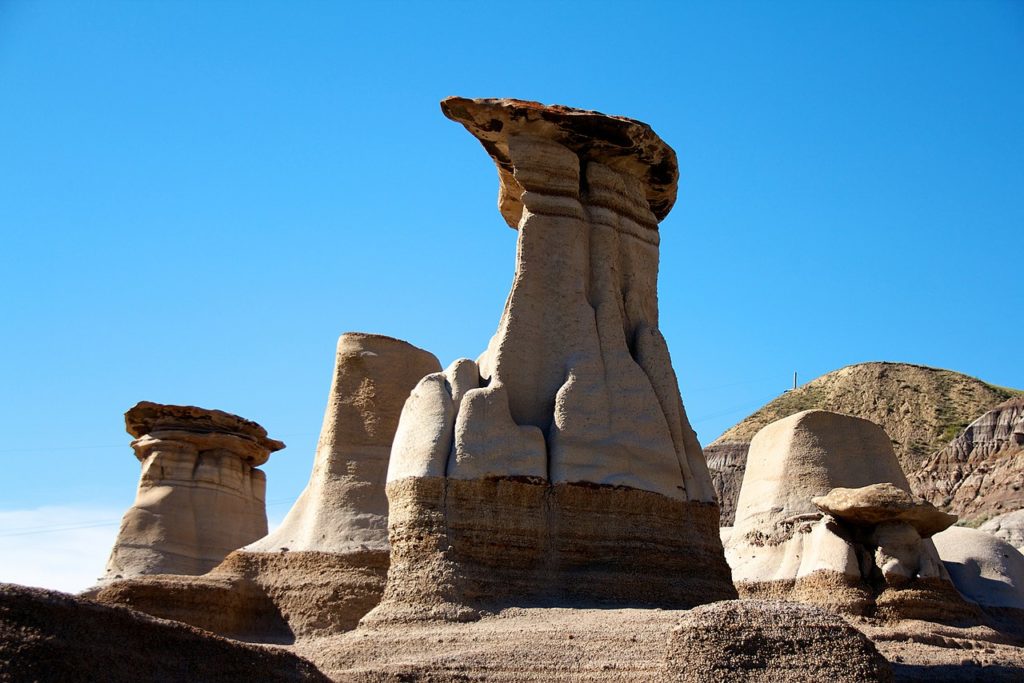
In addition to their beauty, the Drumheller Hoodoos also have a significant scientific value. They provide scientists with insights into the region’s geological history and the processes that have shaped the landscape over time. The hoodoos are also a valuable habitat for a variety of plants and animals.
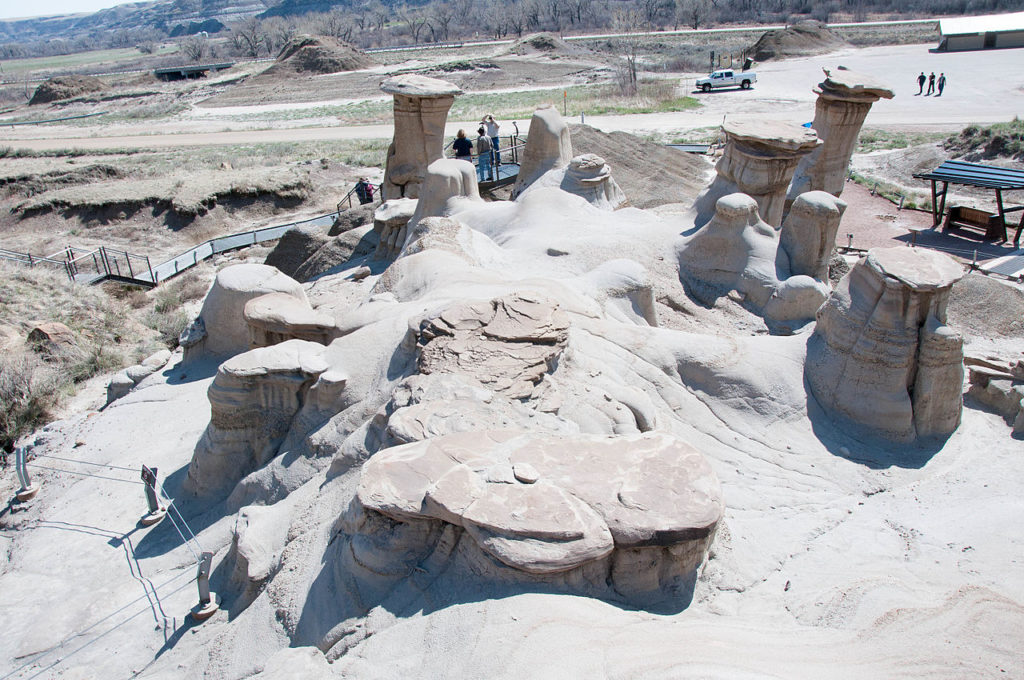
The Drumheller Hoodoos are a testament to the power of nature and the beauty of the Canadian landscape. They are a must-see for anyone visiting Alberta.
According to the Internet





